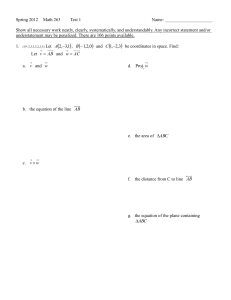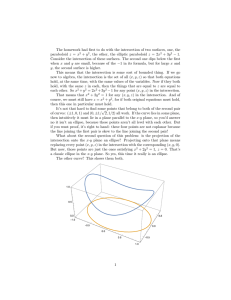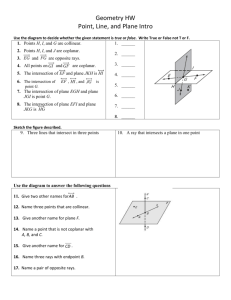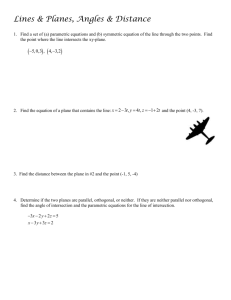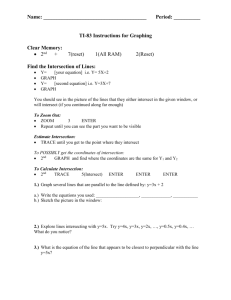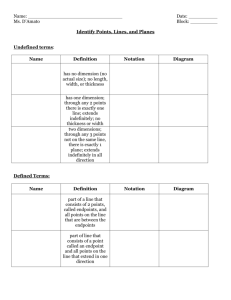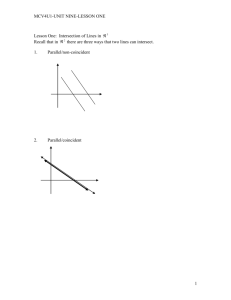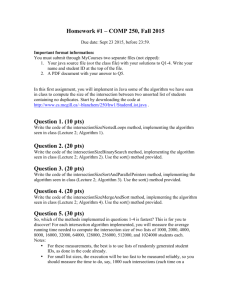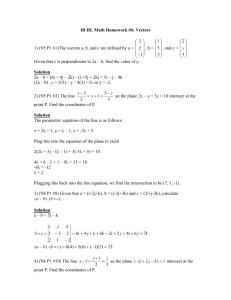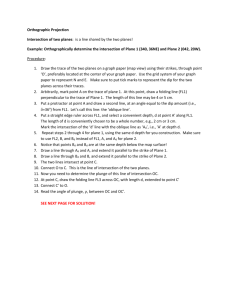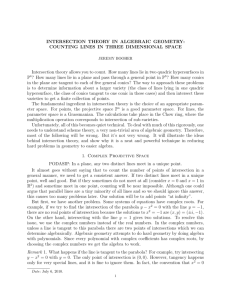Chapter 9 - I really love math.com
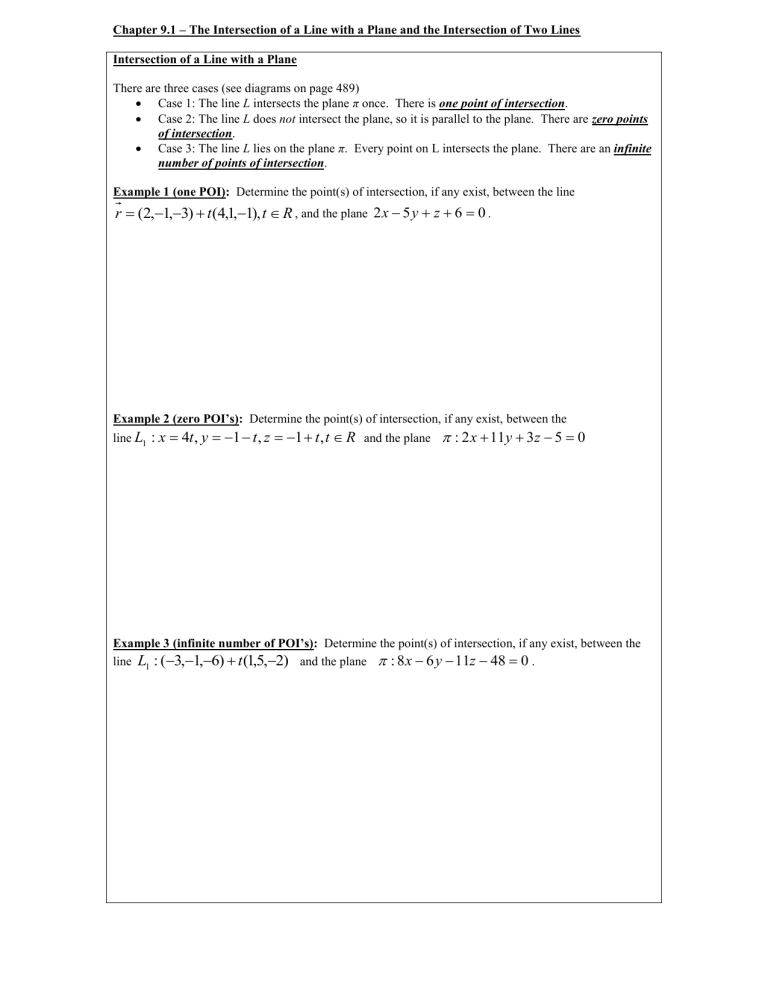
Chapter 9.1 – The Intersection of a Line with a Plane and the Intersection of Two Lines
Intersection of a Line with a Plane
There are three cases (see diagrams on page 489)
Case 1: The line L intersects the plane π once. There is one point of intersection .
Case 2: The line L does not intersect the plane, so it is parallel to the plane. There are zero points of intersection .
Case 3: The line L lies on the plane π . Every point on L intersects the plane. There are an infinite number of points of intersection .
Example 1 (one POI): Determine the point(s) of intersection, if any exist, between the line r
( 2 ,
1 ,
3 )
t ( 4 , 1 ,
1 ), t
R , and the plane 2 x
5 y
z
6
0 .
Example 2 (zero POI’s): Determine the point(s) of intersection, if any exist, between the line L
1
: x
4 t , y
1
t , z
1
t , t
R and the plane
: 2 x
11 y
3 z
5
0
Example 3 (infinite number of POI’s): Determine the point(s) of intersection, if any exist, between the line L
1
: (
3 ,
1 ,
6 )
t ( 1 , 5 ,
2 ) and the plane
: 8 x
6 y
11 z
48
0 .
Intersection Between Two Lines: (see the diagram on page 493)
Intersecting Lines
Case 1: The lines are not parallel, and intersect at a single point
Case 2: The lines are coincident, meaning that the two given lines are identical. There are an infinite number of points of intersection
Non-intersecting Lines
Case 3: The two lines are parallel, and there is no intersection.
Case 4: The two lines are not parallel, and there is no intersection. These are called skew lines. Skew lines exist in
3
R but do not exist in
2
R .
Example 1 (Lines are not parallel, and intersect at a single point): Determine the point(s) of intersection, if any, of the lines r
1
( 1 , 2 , 1 )
s ( 2 , 3 , 2 ) and which of the four cases, above, this is an example of, kids. r
2
(
3 , 4 ,
8 )
t ( 2 , 11 ,
3 ) . State
Example 2 (Lines are parallel, and coincident): One approach would be to show that the direction vectors of the two lines are scalar multiples of each other, then show that they have at least one point in common.
Example 3 (Lines are parallel, and non-coincident): One approach would be to show that the direction vectors of the two lines are scalar multiples of each other, and then show that there is a point on one line which is not on the other.
Example 4 (Skew lines): Determine the point(s) of intersection, if any, of the lines
L
1
: x
3
2 s , y
1
2 s , z
5
s , s
R and L
2
: x
3
4 t , y
6
t , z
Then, state which of the four cases this is an example of.
1
3 t , t
R .
Are the lines parallel to each other
(i.e., is the direction vector of one line a scalar multiple of the direction vector of the other line?)
Do the lines have a point in common?
Y
N
Y N
2
1
3
4
